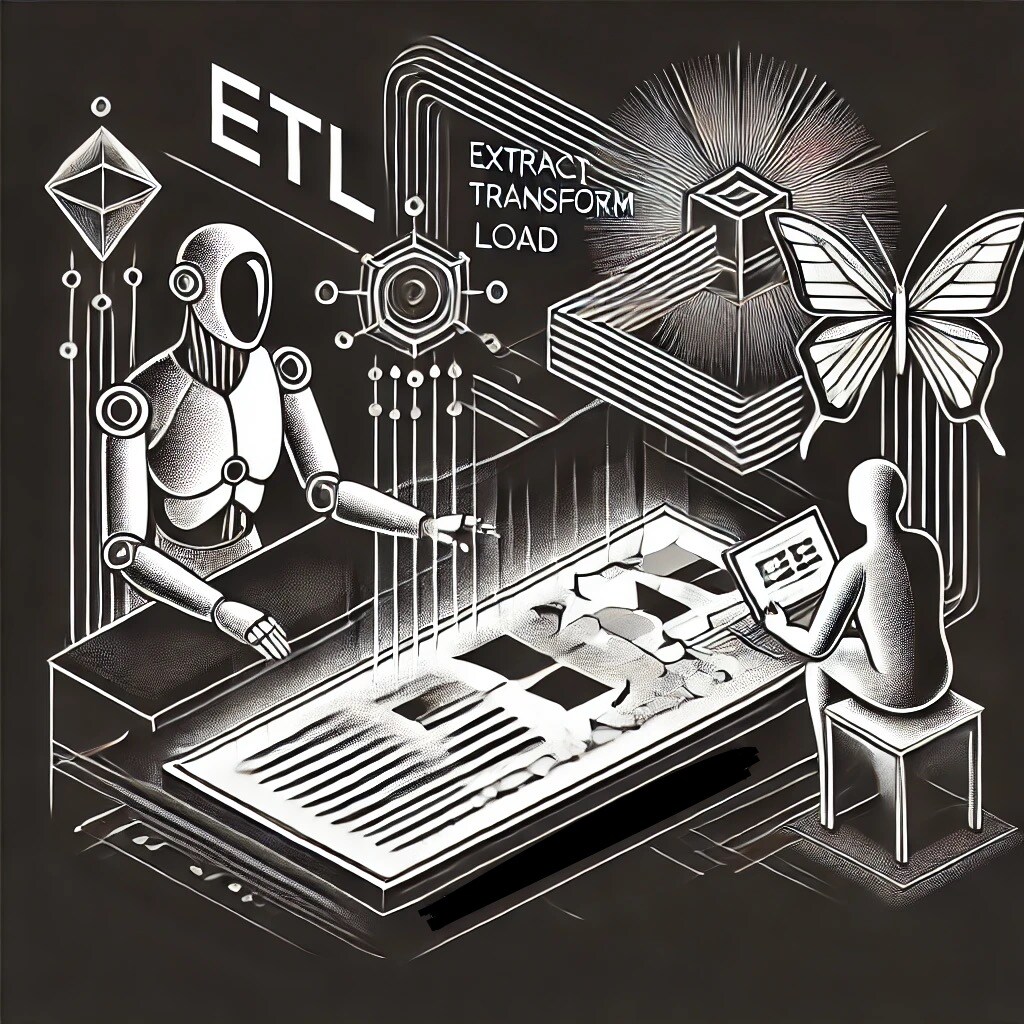Cleaning the Digital Ocean: How Generative AI is Transforming Data Quality Assurance
In an era where data is the lifeblood of business, how can companies ensure the purity of this vital resource? AI (GenAI), is poised to revolutionize data quality assurance and propel businesses into a new frontier of data reliability.
The data deluge of the digital age has left many organizations drowning in information, struggling to separate signal from noise. Traditional data cleaning methods, often manual and time-consuming, are buckling under the weight of big data. GenAI offers a sophisticated, automated approach to data quality management that promises to transform raw, messy data into usable information for business intelligence.
Here’s an example use case:
Use Case: Utilize GenAI to parse and standardize unstructured or semi-structured text data during ETL (Extract, Transform, Load) processes in Pentaho.
Example: Customer addresses are entered in various formats across different systems. A LLM (Large Language Model) can interpret these variations and standardize them into a consistent format during data ingestion, improving address accuracy and facilitating better data integration.

At its core, GenAI leverages advanced machine learning algorithms to understand, clean, and validate data with unprecedented efficiency and accuracy. By identifying complex patterns and anomalies that might elude human operators, GenAI acts as a guardian of data integrity. It can scrub datasets clean of inconsistencies, fill in missing values with statistically sound estimates, and flag potential errors with remarkable precision for Anomaly Detection. What’s more is that using GenAI we now have the capability to do this type of anomaly detection on an individual record level. In other words each record being analyzed on a case by case basis. Here’s an example use case:
Use Case: Deploy LLMs to analyze patterns in data streams and identify outliers or unusual trends.
Example: In financial transaction data processed by Pentaho, an LLM can spot transactions that deviate significantly from typical behavior, such as sudden large transfers, indicating potential fraud.

But the true power of GenAI in data quality assurance lies in its ability to learn and adapt. As it processes more data, it becomes increasingly adept at recognizing industry-specific nuances and data idiosyncrasies. This continuous learning process ensures that data quality checks evolve in tandem with changing business needs and data landscapes. Again, the real power here is that GenAI can look at every possible combination and find patterns for Data Quality that humans might not be able to surface in traditional algorithms. Here’s one idea:
Use Case: Detect complex patterns and relationships in data that traditional algorithms might miss.
Example: Identify indirect correlations or dependencies between datasets that affect data quality, such as seasonal impacts on sales and supply chain data discrepancies.

The implications for businesses are profound. With GenAI at the helm of data quality processes, companies can dramatically reduce the time and resources devoted to data preparation. This acceleration in data readiness translates directly to faster insights, more agile decision-making, and ultimately, a sharper competitive edge. Here’s an example:
Use Case: Implement chatbots powered by LLMs to assist users in resolving data quality issues interactively.
Example: When a data quality issue is detected, a chatbot can guide the user through steps to resolve it, explaining the nature of the problem and suggesting solutions within the Pentaho environment.

Moreover, GenAI's capability to generate synthetic data opens up new avenues for robust testing and validation of data systems. By creating realistic, artificially generated datasets, organizations can stress-test their data pipelines and analytics models without risking sensitive information – a game-changer for industries grappling with stringent data privacy regulations. One example could be contextual data filling and imputation. GenAI could fill in missing data fields based on the context and flag synthetic data as “artificially generated” or “inferred data”. Making the data assumptions known and provide a reasonable guess.
Use Case: Use LLMs to fill in missing data fields based on context derived from other available data.
Example: If certain customer profiles are missing occupation data, an LLM can infer likely occupations based on other information such as education level and industry, increasing data completeness.

However, the path to GenAI-driven data quality is not without its challenges. Questions of transparency and explainability loom large, as businesses and regulators alike grapple with the implications of AI-driven decision-making. There's also the ever-present concern of potential biases being inadvertently baked into AI models, which could propagate and amplify data quality issues if left unchecked.
Here are some important considerations when using GenAI for Data Quality. Fortunately Pentaho has the capability to help organizations control what goes into an LLM and what does not.
Considerations:
- Data Privacy and Compliance: Ensure that integrating LLMs complies with data protection regulations, especially when handling sensitive data.
- Performance: Be mindful of the computational resources required by LLMs and optimize accordingly to maintain efficient data processing pipelines.
- Accuracy and Reliability: Continuously evaluate the LLM's outputs for accuracy, as LLMs may sometimes produce unexpected results.

It's clear that the integration of GenAI into data management practices is not just an opportunity, but an imperative for forward-thinking organizations. Those who successfully harness the power of GenAI to ensure data quality will find themselves with a formidable advantage – armed with data they can trust implicitly, enabling them to navigate the complexities of the modern business landscape with confidence and clarity.
The future of data quality assurance is here, and it's powered by generative AI. As this technology continues to evolve and mature, we can expect to see even more innovative applications emerge, further cementing GenAI's role as a cornerstone of robust, reliable, and actionable business intelligence. In this new era, the question for businesses is no longer whether they can afford to invest in AI-driven data quality – but whether they can afford not to.

 By
By


